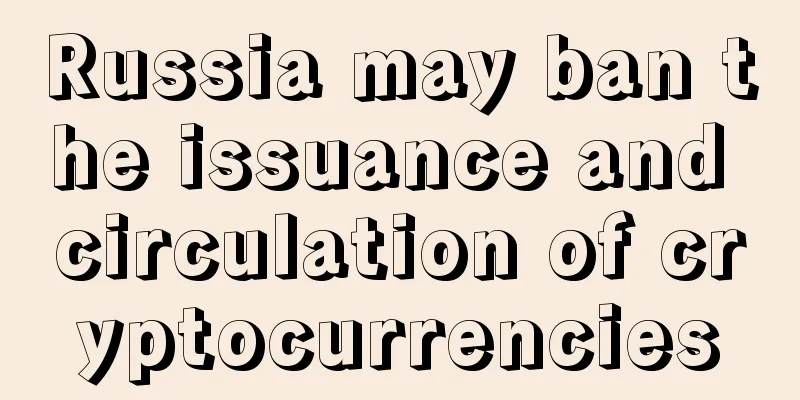Russia may ban the issuance and circulation of cryptocurrencies

|
Text | Liang Yushan On March 17, according to Cointelegraph, Alexey Guznov, head of the legal department of the Russian Central Bank, revealed in an interview that the country’s digital financial assets bill, which has not yet been formally implemented, will prohibit the issuance and circulation of cryptocurrencies and will impose fines for violations of the law. Alexey Guznov also pointed out that although the "Digital Financial Assets Act" initially allowed cryptocurrency trading, the revised document will apparently prohibit all activities except holding the asset. Alexey Guznov did not give a direct answer to whether the country's central bank prohibits citizens from exchanging cryptocurrencies for the country's legal currency ruble or foreign currency. On the contrary, Alexey Guznov reiterated that “the central bank is against the issuance of cryptocurrencies by institutions”. He also added that the central bank will not be able to impose certain restrictions on Bitcoin transactions. “For example, if people complete transactions in jurisdictions that do not prohibit Bitcoin transactions, it will be unlikely for us to regulate them.” It is understood that the above-mentioned upcoming bill was first proposed by Russian President Putin in January 2018. He has twice ordered the passage of the bill "On Digital Financial Assets", but the bill has not yet been finalized. While Russia’s Ministry of Finance has been working to legalize cryptocurrencies, the country’s central bank has been opposed to the move. In February, the central bank issued a set of rules on suspicious transactions and classified any cryptocurrency-related transactions as potential money laundering risks. At the end of December last year, Elvira Nabiullina, governor of the Central Bank of Russia, said that while prohibiting local entities from issuing their own digital assets, the institution is exploring the potential uses of stablecoins through regulatory sandboxes and continues to explore the possibility of issuing central bank digital currencies. |
<<: Hackers use fake "COVID-19 tracker" app to invade users' phones and extort Bitcoin
>>: 4 Key BTC Metrics Show All Hope Is Not Lost for Crypto Markets
Recommend
【Filecoin Weekly Report-82】Venus implements the latest fork and completes full synchronization testing
This article was originally written by IPFS Force...
Is it a good fate to have crooked teeth?
Is it a good fate to have crooked teeth? (1) Fate...
"BCB is born for the city" blockchain industry exchange event was successfully held
On November 15, the blockchain industry exchange ...
How to tell if someone has small ears?
If some people have relatively small ears, what k...
Moles that will improve your career fortune These moles indicate that your career will be successful
We all know that facial features can affect caree...
Is the fate of a girl with peach blossom eyes good?
Is the fate of a girl with peach blossom eyes goo...
How to read face diagram
How to interpret a person's fate by looking a...
What does a mole on the right side of a man’s neck mean? How’s your life?
Moles not only exist in places that are easy for ...
Antminer old models will no longer be repaired (EOS) Announcement
Dear Antminer users: In order to better assist yo...
What are the characteristics of a woman's small mouth? Do women with small mouths have good personalities?
Women's small mouth is conservative If a woma...
Index finger in palmistry
The index finger is also called the Jupiter finge...
Analysis of the facial features of men with forehead wrinkles
Wrinkles are something that everyone has, and the...
What do nasolabial lines represent in physiognomy? What does a mole on the nasolabial lines represent?
In fact, a lot of information can be revealed fro...
Is it good for a woman to have a mole on the sole of her right foot?
We all know that moles in different positions rep...
Multiple risks accumulate, Bitcoin must be put into a regulatory "cage"
In 2017, Bitcoin regulation began. At the beginni...









